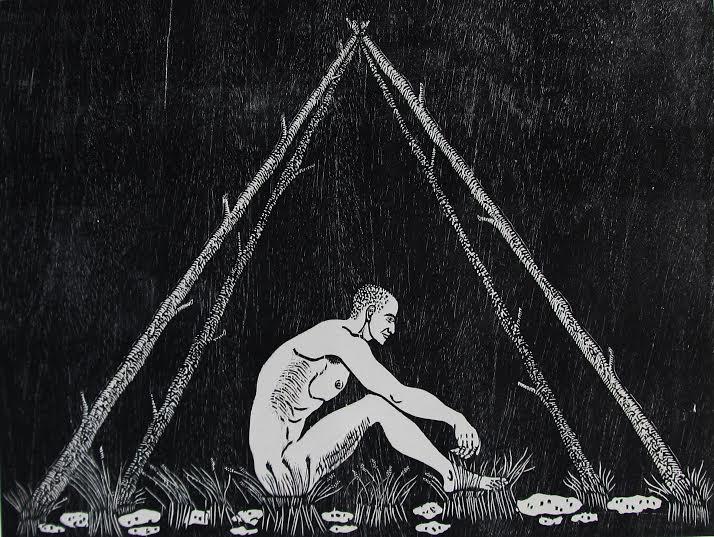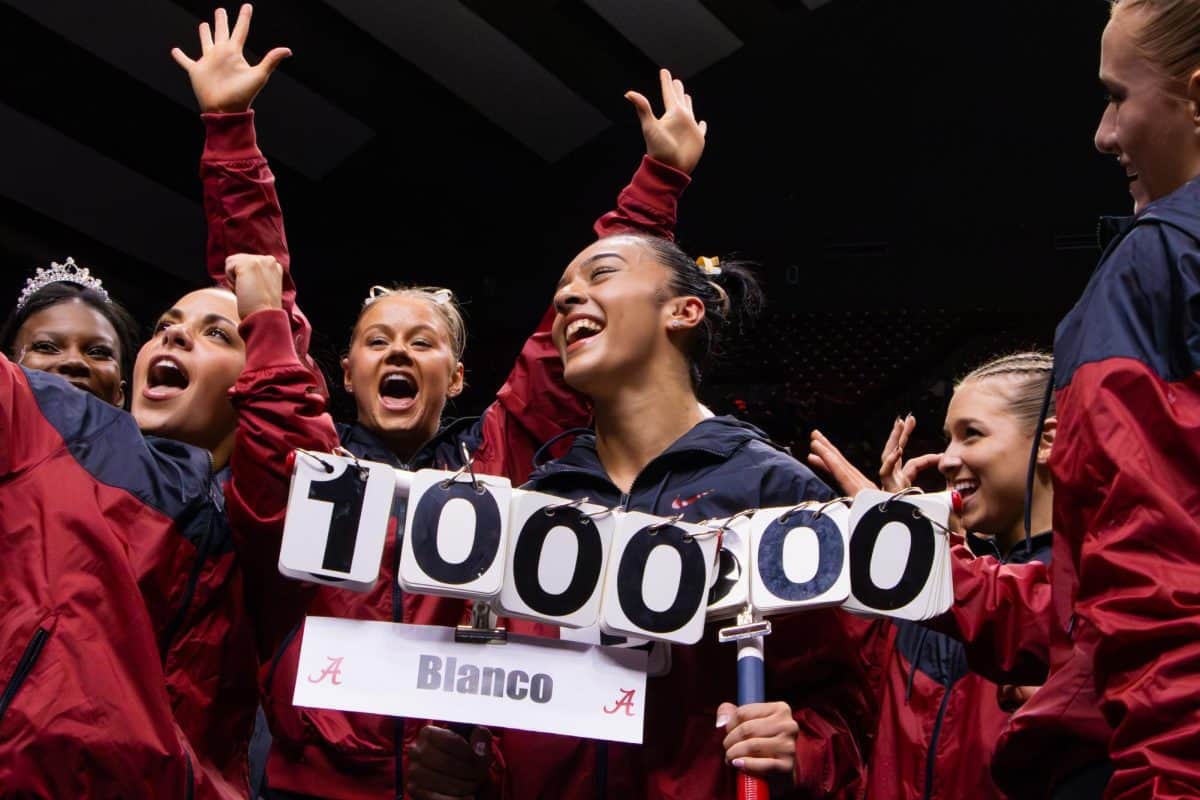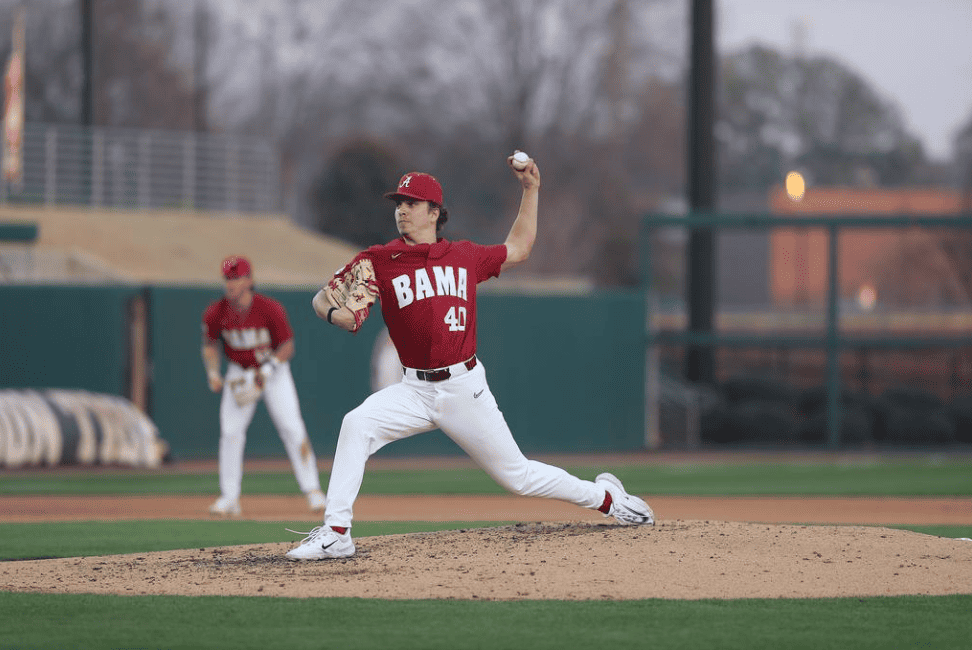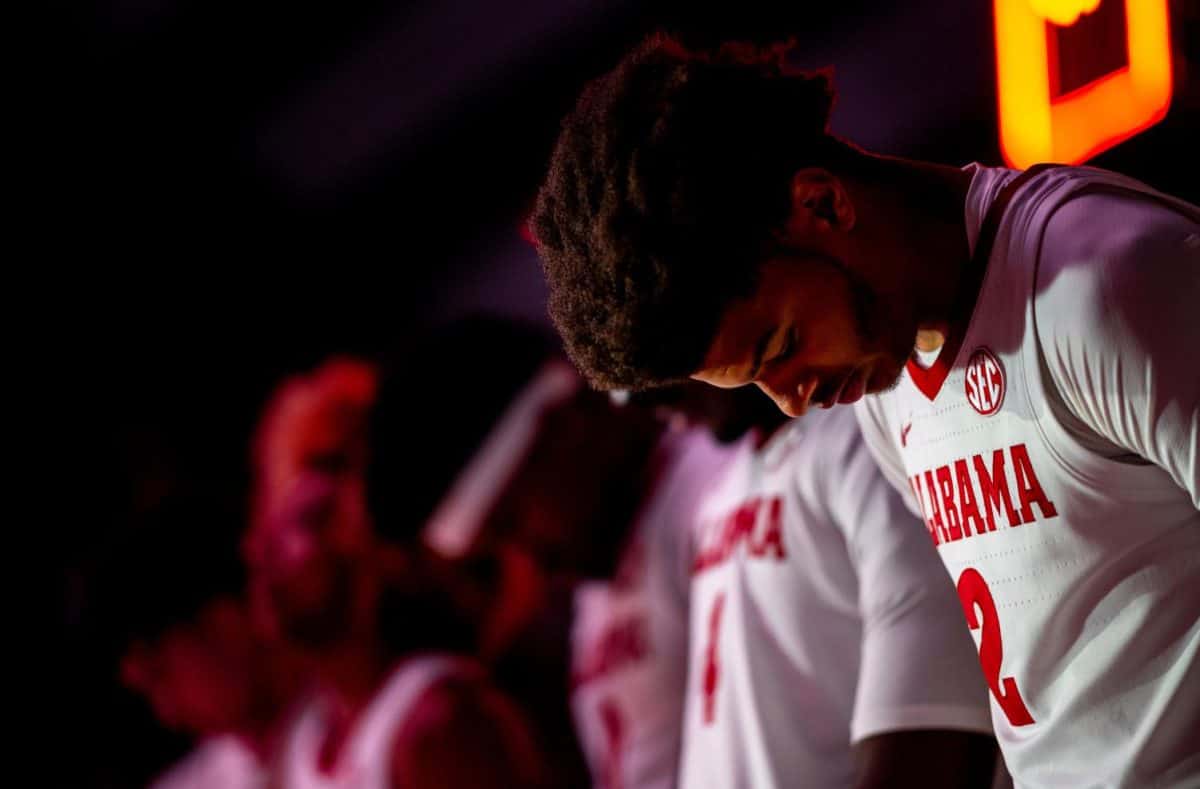Lonely figures in stark black and white dwell on existence. One is trapped in a wooden prison, being watched by an immense, muscular overlord. Another reclines with a flag between her feet. A third sits in a pyramid of branches, looking into the distance.
These works are woodcut prints from Cuban artist Aliosky García, and they’re part of a new exhibit at The University of Alabama, “Entrelazado.” García’s prints, as well as those of several other Cuban artists, are available to view in Sella-Granata Art Gallery in Woods Hall.
“One theme in his work is human isolation and the human condition, what it is like to be an individual,” said Sarah Marshall, an associate professor of art at the University. “It’s a very poetic take on the figure.”
García’s work is at The University of Alabama as a part of the school’s Cuba Initiative, which has been connecting teachers and students from Tuscaloosa and Havana since 2002. The artist is a professor at the Instituto Superior de Arte in Cuba, where he focuses on printmaking. Marshall helped bring the exhibit to the University because she works in the same medium as García.
Marshall described the artist as energetic and said the two often communicated through gestures because of the language barrier between them. Because they both work using the same processes, she said they already had some common experiences.
Half of “Entrelazado” is a solo exhibit featuring only García’s work. The other half is a collection of prints by various artists that Marshall has found during her many trips to Cuba.
Woodcut prints are made by carving the reverse of an image into a block, dipping this into ink and then stamping the results on a surface. This form of art has a long history, going back to the printing press and some of the earliest forms of mass communication.
“Printmaking has a really interesting timeline,” Marshall said. “It has footholds in the worlds of both art and design.”
Marshall said it’s important for students to see art from other countries because it’s one of the best ways to learn about how people around the world live. If an artist decides to draw from their personal experience to make art, they will do so reflecting on their past and culture. And if they decide to draw the world around them, they’ll be depicting the landscape, life and people of different society.
“Whatever the culture of your country is, those are images that will show up in the work you are making,” she said.
In the future, Marshall hopes to bring García to the University for a residency.
Anna Embree is an associate professor who teaches classes in the University’s graduate book arts program. She’s worked with Marshall in the past and has also done her own work in Cuba as part of a separate program.
“Cuban artists are so innovative with their processes, our students learned so much from them,” Embree said. “And we hope they learned from us.”







